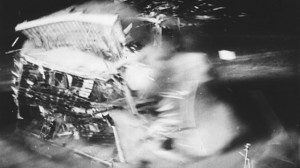This is an article, based on scientific observation and historic facts. It’s meant for entertainment and educational purposes only.
 Have you ever seen what an atomic explosion looks like? No, you haven’t because no one survives that. There are several explosion types, based on the kind of technology used. The nuclear bomb in particular, like the “Fat Man” gravity bombs used on Nagasaki, is the most popular given example. Upon detonation, the division process of particles creates an enormous amount of energy, which has to go somewhere.
Have you ever seen what an atomic explosion looks like? No, you haven’t because no one survives that. There are several explosion types, based on the kind of technology used. The nuclear bomb in particular, like the “Fat Man” gravity bombs used on Nagasaki, is the most popular given example. Upon detonation, the division process of particles creates an enormous amount of energy, which has to go somewhere.
If you’re familiar with the case, from beyond a safe distance, the whole thing looks like this. There is a bright white light that blinds the eye, after which a mushroom-like cloud can be observed. The blast creates a spherical-shaped hole in the ground, due to the nature of the explosion. The cloud above is a result of the remaining chemical elements after the conclusion of the division process, which can vary from the radioactive elements used to trigger the process, all the way down to simple hydrogen atoms.
Since the process is division and not fusion, a blast wave of equal intensity is sent in every dimensional direction. Those waves that are collinear to the ground are the ones that will hit our house in question. Let’s take for example an iconic house, such as one constructed from brick or stone. Although these houses are supposed to withstand up to a moderate earthquake, they have zero chances of being used again, after a blast weave impact. Eager to know why?
We will divide the blast’s proximity in 3 levels. The first is a direct hit. As you can already make out, nothing survives that. The heat, energy and vibrations are so intense, most materials on this planet get instantly vaporized. Half-way the blast wave radius, we still have the intensity of the blast wave off the chart. Though not directly in the middle, this is actually where the most destruction is done. Since the division process also slightly interacts with material in the area, we get radiation readings. This is also the area where massive debris are blown away. The finer particles, like sand, accompanies as well.
Now let’s get back to our point. We imagine all exits of the house, including windows, are closed. This creates separate internal and external conditions. For starters, the biometric pressure differs. The first to arrive is the blast wave. It easily shatters the windows and penetrates the inside compartments of the house. Since there is not enough space for the pressure to escape as quick as it should, the whole construction literally blows from the inside out. What’s left are pieces of the material used to construct the building. By now, the other explosion anomalies, like debris, heat, energy and radiation, reduce what’s left of the home to a pile of dust and debris.
And the end line or the blast wave radius, debris and radiation are too well-dispersed to reach any danger levels. Only the blast wave makes it, but even that can still cause serious damage to your home, like broken windows and internal furnishing.
Now you know what epic destruction of this sort looks like.


